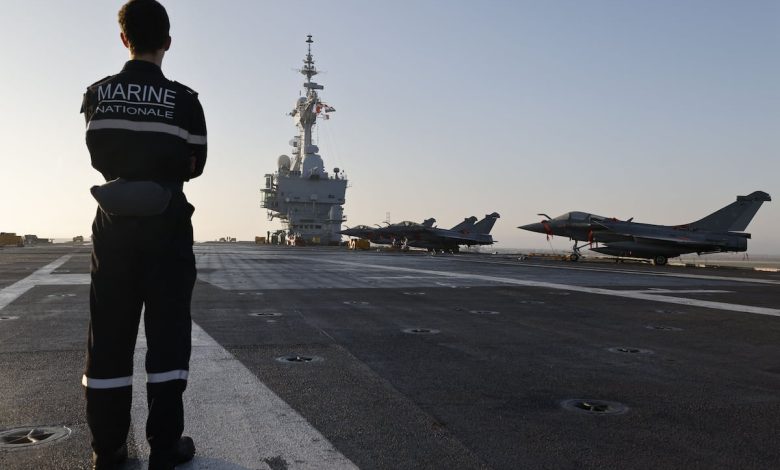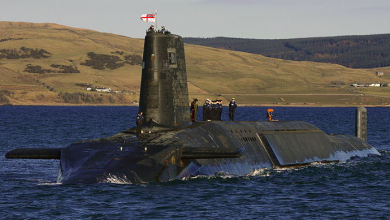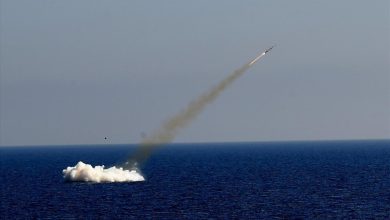France eyes aircraft carrier, frigate order in 2025 spending plan

PARIS — France’s defense budget next year includes orders for a next-generation aircraft carrier to replace the Charles de Gaulle as well as a new frigate, Armed Forces Minister Sébastien Lecornu told a parliamentary hearing on Monday, sketching the outlines of the ministry’s plans in 2025.
The defense ministry plans to boost spending on ammunition, particularly “complex munitions,” lift the space budget and raise funding for intelligence gathering and cyber, Lecornu told the defense committee of the lower house. Other areas of investment will include research on directed-energy weapons, artificial intelligence and deep-sea capabilities.
The French government has proposed to lift the 2025 defense budget to €50.54 billion (US$55 billion) from €47.23 billion this year, one of the few departments to see funding increase as Prime Minister Michel Barnier attempts to bring the country’s budget deficit under control.
The aircraft carrier order will mean the start of “a program with major impact,” Lecornu told lawmakers. The minister last year estimated the cost of the vessel that will replace the Charles de Gaulle nuclear-powered carrier in the €10 billion range. The country also plans to order another defense and intervention frigate, after Naval Group started sea trials of the first unit in the program earlier this month.
France plans to increase ammo buying by 27% to €1.9 billion, with purchases including MBDA’s Meteor air-to-air missile, Mistral and Aster air-defense interceptors, Scalp cruise missiles and Exocet anti-ship missiles, as well as heavy torpedoes, according to Lecornu. The budget for the SAMP/T NG air-defense system developed together with Italy will double to €500 million.
The minister took a swipe at European countries buying the Patriot air-defense system, saying the new generation SAMP/T with its 360-degree radar coverage outperforms its U.S. competitor. First tests with the Aster B1 NT missile to distinguish its target in a saturated airspace with multiple objects have been “very conclusive,” Lecornu said.
Lecornu said he is counting on Thales and MBDA to make the SAMP/T NG system an export success, where the previous generation failed to find many buyers outside France and Italy. “We can see that it’s going to sell,” and one key element will be MBDA moving towards “a war economy with production lines that hold up” to deal with attrition, the minister said.
France plans to allocate a third of its defense budget to acquisition and maintenance of equipment, with the budget for large armament programs other than nuclear rising 16% to €10.6 billion. Salaries will account for 27% of the 2025 defense budget, with nuclear deterrence amounting to 14% of spending.
The budget for nuclear deterrence will climb 8% next year, which will pay for continued development of the M51 submarine-launched ballistic nuclear missile and work on the ASN4G hypersonic missile, expected to enter service in the 2030s, Lecornu said. He also mentioned this year’s start of construction of France’s third-generation ballistic-missile submarine.
The space budget will increase 15% to €870 million. Lecornu said militarization of space is “unfortunately” continuing, with projects by the great powers that could endanger security. Spending on robots and drones will increase around 12% to €450 million, while the Armed Forces Ministry plans to triple the budget for artificial intelligence to €300 million, including investment in a supercomputer for defense AI.
Deliveries next year will include 14 Rafale fighter jets, an Airbus A400 transport aircraft, a defense and intervention frigate, 308 armored vehicles in the Scorpion program and 21 renovated Leclerc main battle tanks, according to Lecornu.
France aims to be able to deploy two brigades in an expeditionary capacity in 2027, and have the ability to deploy an Army corps in 2030, either within a NATO framework or outside of it, Lecornu said.
Rudy Ruitenberg is a Europe correspondent for Defense News. He started his career at Bloomberg News and has experience reporting on technology, commodity markets and politics.







